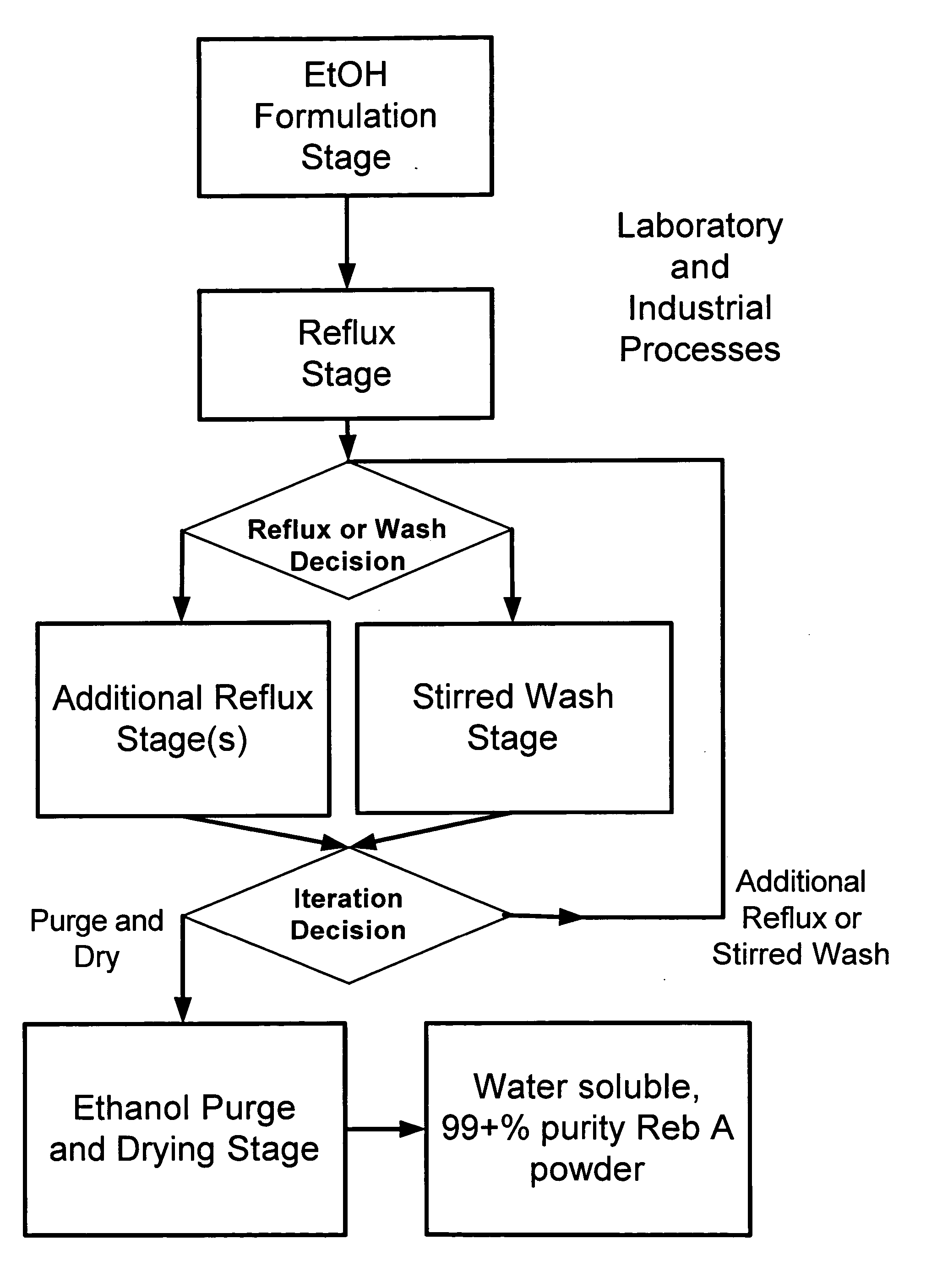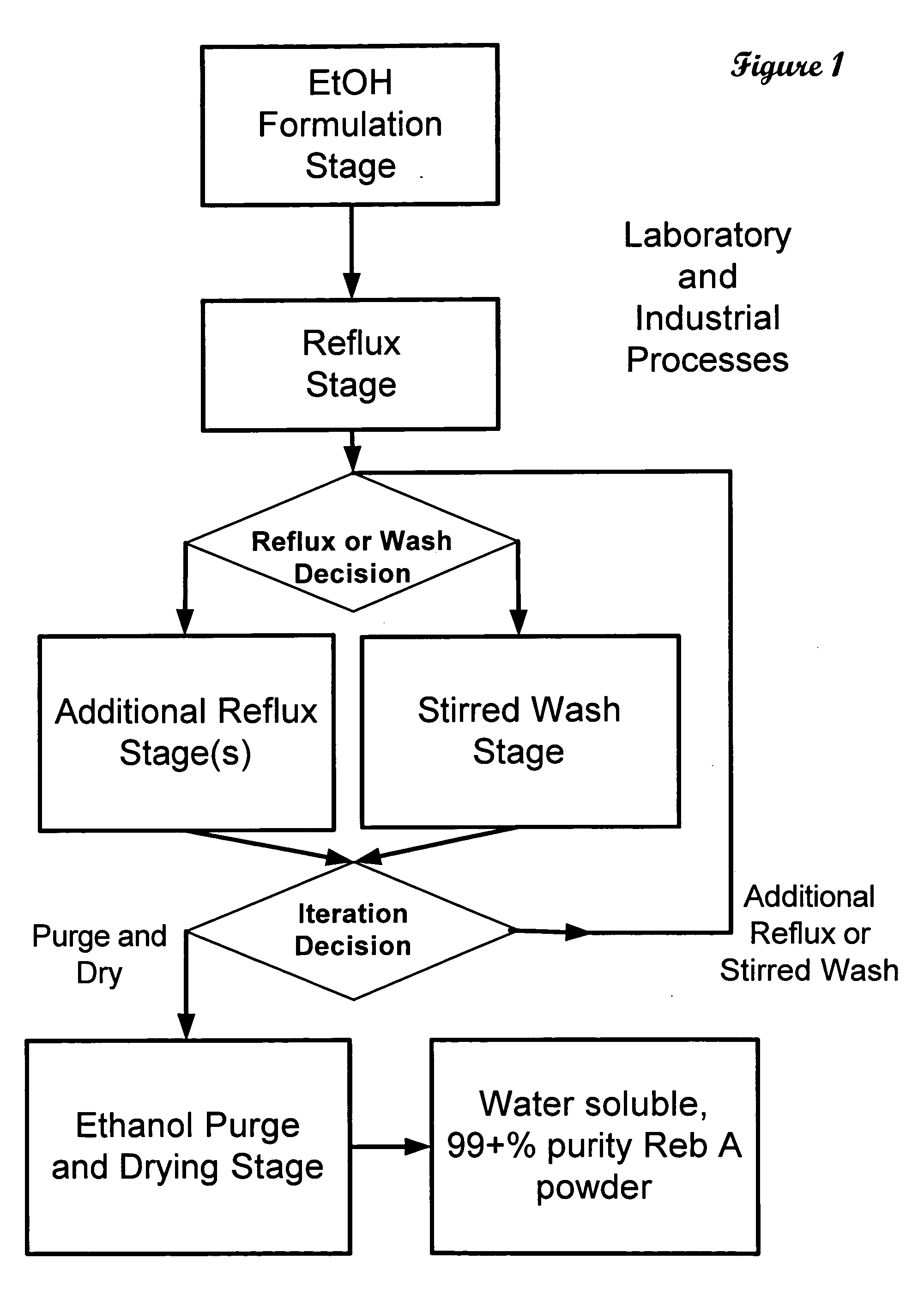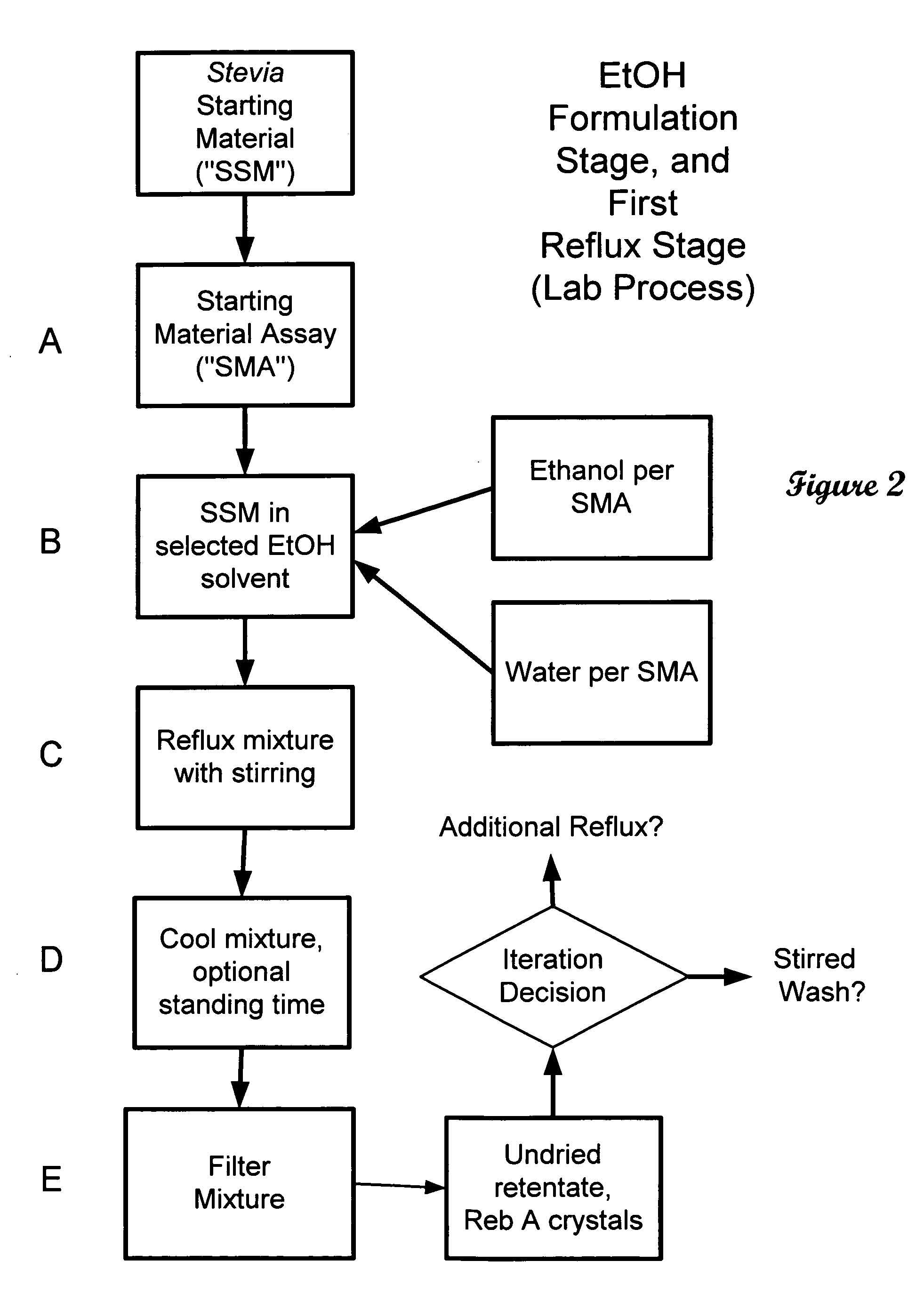High yield method of producing pure rebaudioside A
a rebaudioside, high-yield technology, applied in the field of purification of rebaudioside, can solve the problems of low yield and purity (95%) of rebaudioside, and the inability to disclose the purity of reb, so as to reduce the yield
- Summary
- Abstract
- Description
- Claims
- Application Information
AI Technical Summary
Benefits of technology
Problems solved by technology
Method used
Image
Examples
example 1
[0104] Example 1. Two reflux stages using a series of test solvents followed by an absolute ethanol reflux.
[0105] Example 1 demonstrates the effect of water content in reflux solvent on solids yield and rebaudioside A purity. In Example 1, a series of six solvents was for manulated containing 0%, 2%, 4%, 6%, 8%, and 10% water and the remaining percentage ethanol (volume / volume); each blend of solvent is called a “test solvent”. Three sets of six, 5 gram samples of Stevia starting material containing (i) 71.85% RA, 13.55% stevioside; (ii) 76.13% RA, 6.96% stevioside; and (iii) 81.58% rebaudioside A, 4.49% stevioside (the remainder in each consisted of various concentrations of dulcosides, rebaudiosides, and sterebin compounds) were prepared by blending two commercially available Stevia extracts, RA81.58 and RA40.27. All three sets of blends of Stevia starting material (each, a “Stevia blend”) were dried in a blower oven at 80° C. overnight and were assumed to contain 0% moisture bef...
example 2
[0115] Example 2. One reflux stage using a series of test solvents followed by a stirred wash stage.
[0116] Example 2 demonstrates that the second reflux in Example 1 can be eliminated and reflux with absolute ethanol can be replaced with a shorter duration stirred wash in absolute ethanol when using RA80 or higher Stevia starting material (if the Stevia starting material does not contain “stubborn” contaminants that require an additional reflux stage). The results of Example 2 show that using RA90, a single reflux stage and single wash stage typically produce 99+% purity Reb A.
[0117] In Example 2, as in Example 1, a series of six solvents was formulated containing 0%, 2%, 4%, 6%, 8%, and 10% water and the remaining percentage ethanol (volume / volume); each blend of solvent is called a “test solvent”. 5 grams of RA89.95 Stevia starting material were placed in each of six 100 ml glass round-bottomed flasks and mixed with 20 mls of 100Et / 00W, 98Et / 02W, 96Et / 04W, 94Et / 06W, 92Et / 08W, an...
example 3
[0123] Example 3. One reflux stage, without stirred wash stage.
[0124] Example 3 demonstrates the effect of omitting the stirred wash stage on rebaudioside A purity of the final product.
[0125] In Example 3, two, 5 gram samples of RA89.95 Stevia starting material were placed in two 100 ml glass round-bottomed flasks, respectively, and each mixed with 20 mls of a 92Et / 08W test solvent to form a test mixture (this experiment was conducted while the starting material assay was still being perfected). Each test mixture was refluxed for 1 hour at 80° C. Both test mixtures were left at room temperature for 96 hours and then filtered over a Whatman GF / A glass microfiber filter (1.6 μm pore size). The solids for each test mixture (“reflux retentate”) were collected. One reflux retentate was dried in a blower oven at 80° C. (“non-stirred retentate”) and the other reflux retentate was mixed with 16 mls of 100% ethanol, stirred (stir bar) for 15 minutes at room temperature, then filtered over ...
PUM
| Property | Measurement | Unit |
|---|---|---|
| diameter | aaaaa | aaaaa |
| diameter | aaaaa | aaaaa |
| temperature | aaaaa | aaaaa |
Abstract
Description
Claims
Application Information
 Login to View More
Login to View More - R&D
- Intellectual Property
- Life Sciences
- Materials
- Tech Scout
- Unparalleled Data Quality
- Higher Quality Content
- 60% Fewer Hallucinations
Browse by: Latest US Patents, China's latest patents, Technical Efficacy Thesaurus, Application Domain, Technology Topic, Popular Technical Reports.
© 2025 PatSnap. All rights reserved.Legal|Privacy policy|Modern Slavery Act Transparency Statement|Sitemap|About US| Contact US: help@patsnap.com



